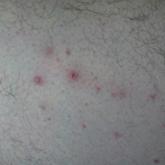Article

Scurvy Masquerading as Reactive Arthritis
- Author:
- Karen L. Christopher, MD
- Kelly K. Menachof, MD
- Ramin Fathi, MD
Patients with scurvy often pose a diagnostic dilemma because their presenting symptoms can lead physicians down a laborious and costly road of...
